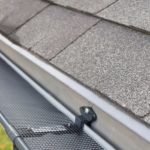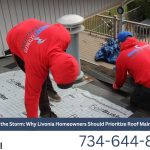Roof Repair in Michigan
A roof must defy many things – wind, rain and heavy snow masses. That’s why you have to think carefully about which type of roofing you choose. Your RoofMI looks at the different types of roofing and the pros and cons of bricks, shingles. Which roof covering do you have? And what experiences have you made with it? Or are you planning to cover your roof and ask questions? Write us a comment on this article or in the roof forum.

Replace roof covering
If you want to rebuild the roof and replace the roof covering, you have to choose between many options. On the market there are bricks made of clay or concrete, or light materials like shingles and cardboard and much more. In addition, you can also green the roof with grass or sedum. Nonetheless, not every decking is suitable for every roof and there are some things to keep in mind:
If you want to replace a light roof covering with solid brick, you must first check the load-bearing capacity of the substructure.
In addition, the suitability of the roof also depends on its inclination and the covering must be created, for example, for slower running water.
Cost of a new roofing
Your RoofMI has already reported on the cost of new roofing. Under New roof – costs and tips you can read the details. If you put your hand on it, you can save a lot and it is not that difficult with roofing felt or concrete bricks. Clay tiles or metal are already more advanced and should be left to a roofer.
In general, you have to offset the costs with the stability and service life. Roofing felt may seem cheap, but is prone to damage. The most important thing about roofing is that you follow the manufacturer’s instructions or have the work done by a professional.
Advantages: Long life and also, provided intact, used to use.
Disadvantages: More expensive than concrete tiles. In addition, they must be laid with care, because it is not easy to produce the necessary water resistance.
Concrete tile
Concrete slabs are very common and hold on roofs up to 14 degrees tilt angle. Nowadays they are no longer necessarily heavier than clay tiles.
Advantages: Long life and very frost resistant. In addition, concrete tiles are cheaper than clay and easier to lay yourself.
Disadvantage: The look is not quite as nice as clay tiles.
Metal
A roof made of copper, steel or aluminum is available in a wide variety of variants – flat, grooved etc. Thickness and coating are decisive for the service life.
Advantages: Lightweight material that needs no maintenance for a long time.
Disadvantages: Should not be laid by hand and is susceptible to corrosion.
Roofing felt and shingles
Roofing board is often found on flat roofs and it is coated with tar or similar. Shingles are also covered with an impregnating layer and are used on a sloping roof.
Advantages: Light and cheap material. Ideal for home improvement.
Disadvantages: Limited lifespan. In addition, the pad must be sealed regularly.
Sedum roof
Sedum for green roofs.
Grass and sedum
Grass or sedum has been used for centuries. Nowadays, the trend is also towards green roof material. However, the roof must be properly sealed or equipped with a drainage system.
Advantages: good insulation and protection. In addition, the roof makes something visually.
Disadvantages: Relatively high price and continuous care is needed.
In addition, there are of course other materials that we have not covered this time.











